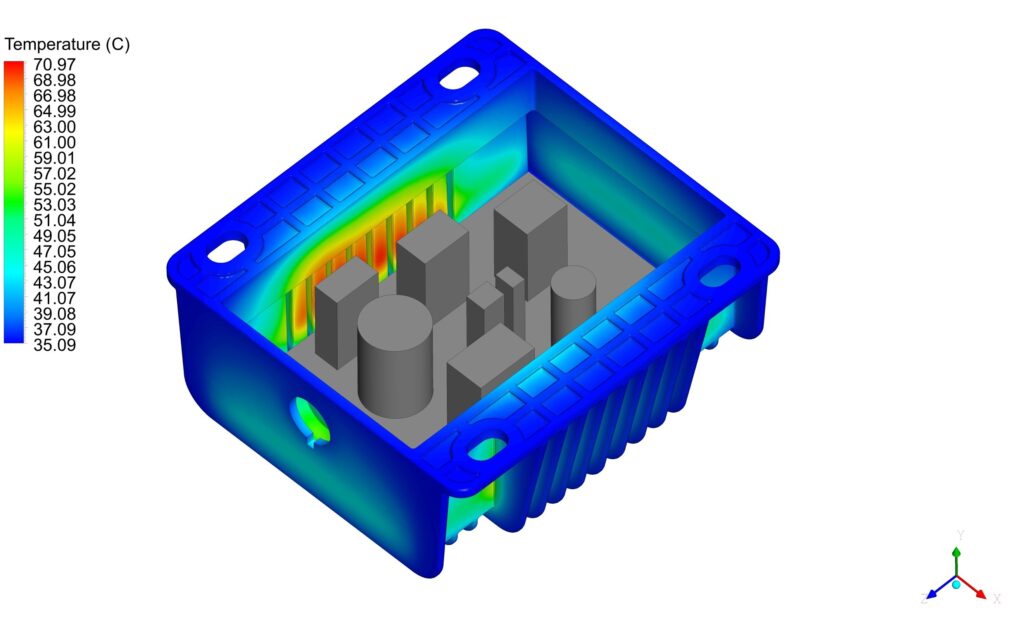For every Product developer, in order to reduce their development time, reduce risks of failure and unknow a need to ascertain the thermal aspects at the earlier stages in the design process. In earlier days, engineers used to do thermal analysis mainly by thumb ruling and simplified equation based calculations to validate design.
With the emergence of numerical methods in computer-Aided Engineering (CAE) and algorithms of Computational Fluid Dynamics (CFD) models, which was widely adopted for the thermal management of electronic systems and modules to improve design-cycle time and iteration expense and provide a tight thermal prediction which allows the electronic designer an enhanced productivity and utilization of capabilities. Initially, hand calculations have can help evaluate temperature for individual components and boards. However, these calculations become less effective when estimating heat transfer through convection and conduction from one board component to another and throughout system-level assemblies. CAE programs can fill this gap, by evaluating temperature profile for many electronic systems. General CFD programs, has wide use and are used to solve many applications and may have better choice for simulating electronics cooling than the more specific programs.
As model size increases it becomes more time intensive to capture all small details which make specific electronics cooling CFD programs more valuable. For example, systems that CFD can be used to simulate from a large system-level like battery enclosure and or power control enclosures. Based on the use cases, one may take conservative assumptions in CFD analysis to produce good quality analysis results which are both reasonable in terms of results, analysis time and complexity.
Majority of electronic enclsoures are air-cooled, either through natural convection method or forced convection through fans. Some IP 67 rated enclosures rely mostly on conductive heat transfer which uses ceramic heat pads, Phase change materials etc. basically to use high thermal conductive materials. CFD analysis can help to understand the thermal build-up inside the enclosure and the heat transfer rate. Generally the velocity, air path, or cooling capability of airflow is complex or less defined. CFD analysis has the capability to identify the amount of airflow produced by fan or natural convection, it helps to identify flow direction, and even size fans to produce the correct amount of flow through the resistance created by the assembly. In other case it helps to size heat pipes, heat plates and fin sizing.
We help you validate your design through CFD simulation, Our CFD Analysis Services holds great promise for Electronics Cooling. We also have a team of experts specialized in CAD Conversion Services, 3D to 2D Conversion Services and also various animation services like Product Animation Services and Pressure vessel analysis services . Contact our support team for more information.


